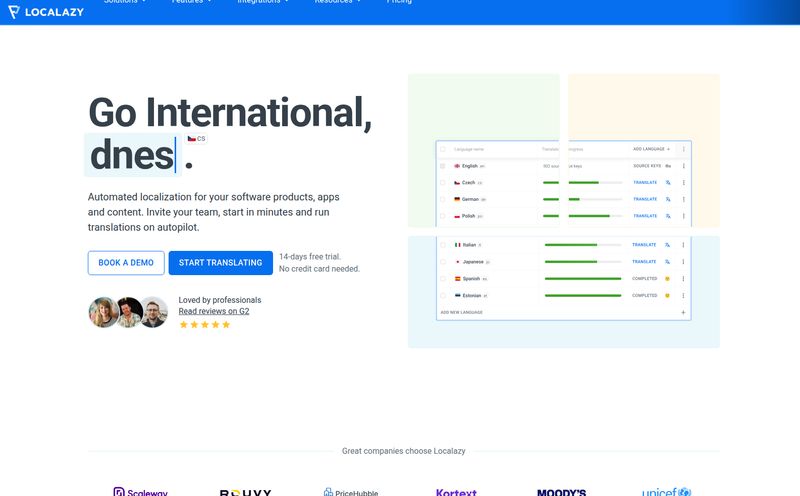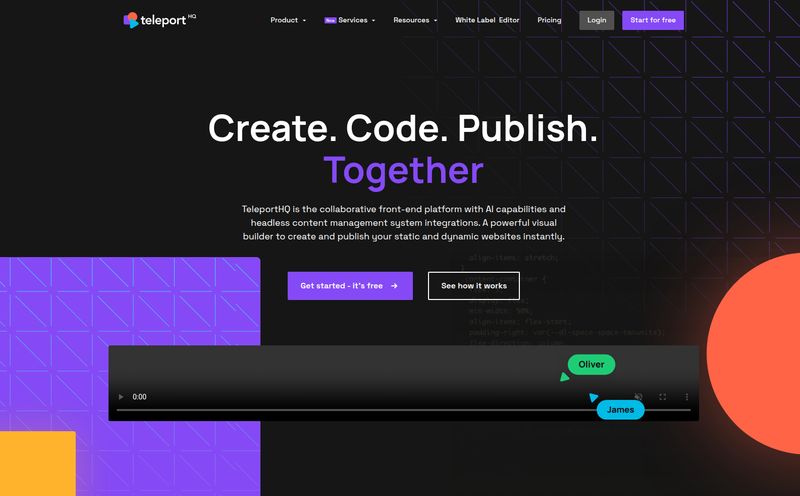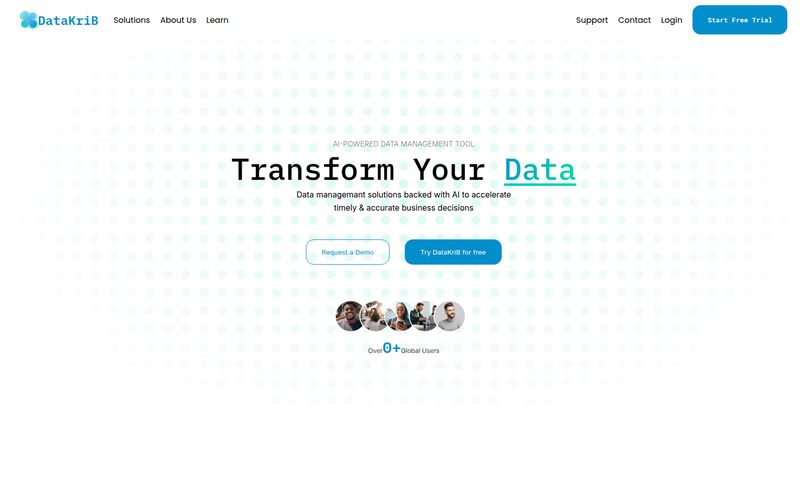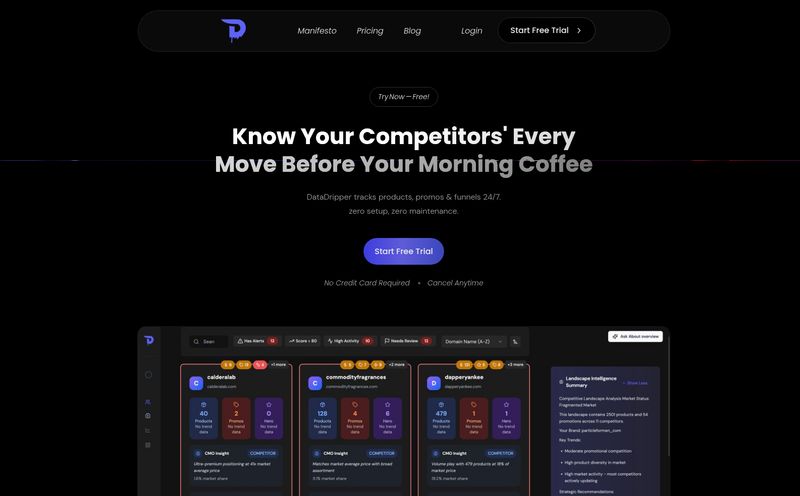I get excited about tools that try to shake things up. For years, I’ve watched different industries get their “open-source moment”—that point where a community-driven, free-to-use tool comes along and challenges the expensive, proprietary giants. It happened in web development, in data science, and in a million other niches. So when I first heard about Flojoy Studio, I felt that familiar spark. Here was a platform promising to bring that same revolution to the world of hardware testing and automation.
Hardware testing has always felt like the wild west, but with really, really expensive sheriffs. You buy an oscilloscope from one brand, a power supply from another, and getting them to talk to each other requires arcane scripts, expensive software licenses, and a whole lot of patience. It’s a classic case of vendor lock-in. Flojoy promised to be the universal translator. The skeleton key for all your gadgets. But as I started digging in, I realized this story has a bit of a twist.
The Dream of a Universal Hardware Translator
Let's talk about what Flojoy Studio was supposed to be, because the idea is brilliant. Imagine you're in a lab or on a manufacturing floor. You’ve got a robotic arm from one company, a circuit board you designed, and a function generator from a third. Your job is to create a test that validates everything works together perfectly. Traditionally, this is a headache.
Flojoy’s pitch was simple: a single, open-source desktop app to rule them all. It was designed to be hardware-agnostic, meaning it didn't care if your gear was from Tektronix, Keysight, or some obscure brand you found on AliExpress. As long as there was a way to communicate with it, Flojoy aimed to provide the bridge.
This is the kind of stuff that gets engineers and technicians excited. It's not just about saving money on software licenses; it’s about freedom. The freedom to choose the best hardware for the job, not just the hardware that's compatible with your existing software suite. It’s about building flexible, modern testing rigs without being chained to a single ecosystem. A truly noble goal.
So, What Exactly Was Flojoy Studio Supposed to Be?
Peeling back the layers, Flojoy was more than just a concept; it had some serious substance. It was built on a foundation that speaks directly to modern developers and automation experts.
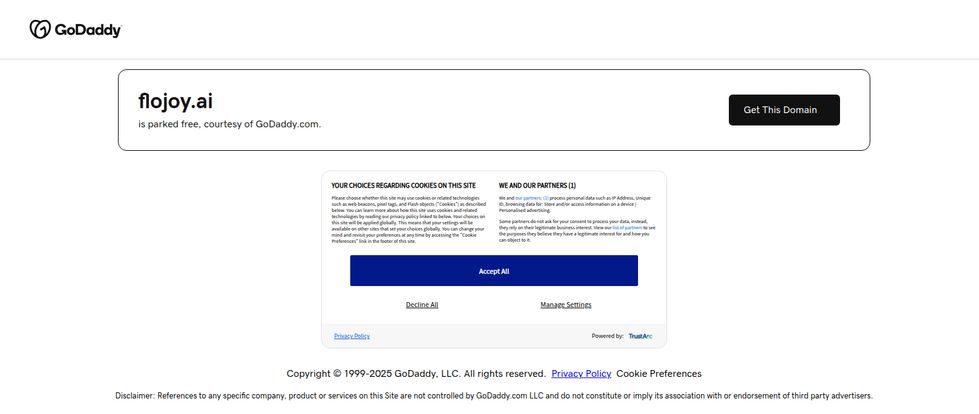
Visit Flojoy
Your Go-To for Python and Robot Framework
Right off the bat, the choice of scripting languages was a huge green flag for me. Instead of inventing its own proprietary language (a classic move to trap users), Flojoy embraced Python and Robot Framework. Python is, without a doubt, the lingua franca of automation today. It's powerful, easy to learn, and has a colossal library ecosystem. Robot Framework is a fantastic open-source framework for test automation, beloved for its keyword-driven approach that makes tests readable even to non-programmers.
By supporting these, Flojoy wasn't asking you to learn a new skill; it was asking you to bring the skills you already have. This dramatically lowers the barrier to entry and is a sign of a tool built with the user truly in mind.
Breaking Down the Walls of Vendor Lock-In
I mentioned this before, but it's worth hammering home. The platform's hardware-agnostic nature was its main selling point. The goal was to provide a modern test runner with a clean, intuitive interface for the operator on the floor. Someone could simply walk up, run a test with a single click, and see a clear “Pass” or “Fail” result. No more deciphering cryptic command-line outputs. It was about making sophisticated hardware testing accessible.
Eyes in the Sky with Flojoy Cloud
And here’s where it got really interesting. Flojoy wasn't just a desktop app. It had a cloud component, aptly named Flojoy Cloud. This was pitched as a real-time system-of-record. All your test results—every pass, every fail, every data point—could be streamed to the cloud. This is a massive deal for manufacturing and R&D. It means a manager in another office, or even another country, could monitor test operations in real time. It means you can spot trends, identify recurring failures, and analyze yields without having to manually pull logs from a dozen different machines. It’s the kind of visibility that separates modern operations from legacy ones.
The Elephant in the Room: The Parked Domain
Okay, so I’ve been hyping this up. A free, open-source, Python-powered, cloud-connected hardware automation platform. Sounds too good to be true, right? Well, this is where the story takes a turn. As part of my research—something I do for every tool I look at—I went to visit the official website, `flojoy.ai`.
And I hit a wall. A big, GoDaddy-branded wall.
The domain is parked. For anyone not in the web world, that means the owner still has the domain name, but there’s no website there. It’s like showing up to a restaurant you've heard amazing things about, only to find an empty lot with a “For Lease” sign. It’s… jarring.
So what does this mean? I’ve seen this happen a few times. It could be a few things:
1. The project ran out of funding or steam. This is a common fate for ambitious open-source projects that don't find a sustainable commercial model.
2. They were acquired. A larger company might have bought them for their technology or team (an “acqui-hire”) and absorbed the project into their own product line, letting the original brand fade away.
3. They pivoted. The company might be working on something new and just hasn't updated the old domain yet.
Whatever the reason, the front door is closed. The project, at least in its public-facing form, seems to be on an indefinite hiatus. Which is a real shame.
The Good, The Bad, and The Open-Source Reality
Even if Flojoy Studio is currently in limbo, its philosophy is worth discussing. The pros were obvious and powerful. Being open-source and MIT-licensed means it was free. You could download it, modify it, and deploy it across your entire organization without paying a dime in licensing fees. That’s huge. The support for popular languages and its hardware-agnostic design gave it a flexibility that proprietary competitors just can't match.
But the open-source model has its own set of challenges, and Flojoy was no exception. For one, it likely required some programming knowledge to get the most out of it. Writing Python or Robot Framework scripts isn't rocket science, but it’s not nothing, either. And with any open-source tool, support often relies on the community—forums, Discord channels, and GitHub issues. You don't have a dedicated support line to call when things go wrong at 2 AM. This is the classic trade-off: you save money, but you invest time and self-reliance.
Was There a Price Tag?
The core Flojoy Studio app was free, which is consistent with its MIT license. But what about Flojoy Cloud? The information out there suggests that this was likely where the business model was. This is a very common and effective strategy for open-source companies, often called “open-core.” The core product is free, but you pay for premium features, hosting, or services—in this case, the managed cloud platform for data logging and monitoring. Unfortunately, with no active website, there's no pricing page to confirm the exact costs. It remains one of teh platform's lingering questions.
What's Next for Hardware Test Automation?
The apparent disappearance of Flojoy leaves a bit of a void, but the need it identified is more real than ever. Engineers and developers are still clamoring for better, more flexible, and more affordable ways to automate hardware testing. The desire to use standard, powerful languages like Python is not going away. If anything, it's getting stronger.
Perhaps another project will rise to take its place. Or maybe the team behind Flojoy will re-emerge with something new. For now, we're left with the blueprint of a great idea: a world where your test software isn't a cage, but a key.
Frequently Asked Questions about Flojoy
What was Flojoy Studio?
Flojoy Studio was an open-source desktop application designed for automating the testing, measurement, and control of hardware devices like oscilloscopes, power supplies, and robotic arms. It aimed to be a universal platform for hardware automation.
Was Flojoy Studio free?
Yes, the core desktop application was free and open-source under the MIT license. However, it's likely that its companion service, Flojoy Cloud, was a paid subscription service for real-time data monitoring and storage.
What programming languages did Flojoy support?
Flojoy Studio was built to run test scripts written in Python and Robot Framework, two very popular and powerful languages in the test automation field.
Why can't I access the flojoy.ai website?
As of late, the `flojoy.ai` domain appears to be parked by GoDaddy, meaning there is no active website at that address. The project may have been discontinued, acquired by another company, or is in the process of pivoting to a new direction.
Are there alternatives to Flojoy Studio?
Yes, while Flojoy had a unique combination of features, there are other tools and libraries in the hardware automation space. Many engineers use Python with libraries like PyVISA to control instruments directly, though this requires more custom development. Other commercial platforms also exist, but they typically lack the open-source flexibility that Flojoy promised.
What is Robot Framework?
Robot Framework is a generic open-source automation framework used for test automation and robotic process automation (RPA). It is known for its easy-to-use tabular test data syntax and its keyword-driven approach.
My Final Take
So, what’s the verdict on Flojoy Studio? It feels like a brilliant but unfinished story. It was a tool with a powerful vision and the right ideas, aiming to solve a very real problem in a notoriously rigid industry. The combination of an open-source core, Python support, and cloud connectivity was, and still is, a winning formula.
The parked domain is a disappointing development, for sure. It's always sad to see a promising project vanish from the public eye. But the need it was built to address hasn't gone anywhere. If anything, the story of Flojoy should inspire others. It proves there's a hunger for innovation in hardware testing. And I, for one, will be keeping an eye out for the next tool that picks up this torch.
Reference and Sources
GoDaddy Domain Parking: www.godaddy.com
Python Official Website: www.python.org
Robot Framework Official Website: robotframework.org
